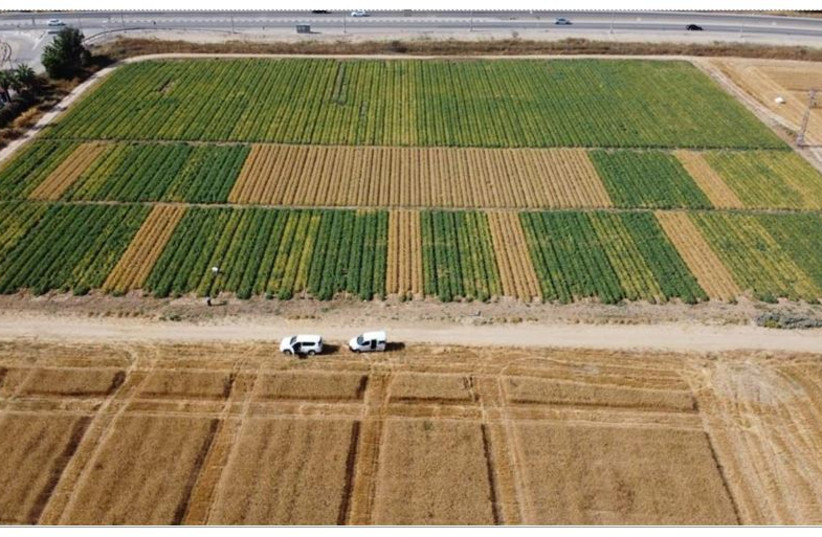Hebrew University of Jerusalem (HU) experts have developed a non-invasive technique for evaluating the status of water used to irrigate chickpea plants (Cicer arietinum L.) The method offers farmers a powerful tool to fine-tune irrigation schedules and potentially elevate the sustainability of growing chickpeas, which are nutritious and not expensive.
Chickpeas, also known as garbanzo beans, are crucial global grain legumes and the basis for the popular dish hummus. They serve as a staple protein source around the world, especially in the Middle East, South Asia, and the Mediterranean. The proposed method holds transformative potential for agriculture by enabling farmers to optimize irrigation schedules efficiently.
A major grain legume grown worldwide as a staple protein source, it is traditionally a rain-fed crop. However, supplemental irrigation can increase yields and counteract the challenges posed by the changing climate worldwide. The HU agronomists suggested a fast and non-destructive plant water status assessment method could streamline irrigation management.
The approach has the capacity to revolutionize chickpea management by increasing crop yields and improving water efficiency. The implications extend beyond the farm, impacting global food security and contributing positively to environmental concerns. It will also have a positive effect on global food security to help feed the poor.
Remote sensing for chickpea water assessment
Researchers Dr. Ittai Herrmann from HU’s Robert Smith Institute of Plant Sciences and Genetics in Agriculture led the remote-sensing aspect of the project. Doctoral candidate Roy Sadeh trained and tested spectral models for quick and noninvasive assessment of chickpea water status based on leaf water potential estimation from space and ground.

The research paper published in Precision Agriculture was “Chickpea leaf water potential estimation from ground and VENµS satellite. ”
HU doctoral student Asaf Avneri covered the agronomical aspects under the guidance of Dr. Ran Lati of the Agricultural Research Organization (ARO)-Neve Ya’ar Research Center and Prof. Shahal Abbo (HU) and with Dr. David Bonfil (ARO). They said the innovative approach holds immense promise for transforming agriculture practices, particularly in regions facing water scarcity.
The study, conducted in two farm experiments and two commercial fields, used ground-based hyperspectral imaging and satellite images from the Vegetation and Environment Monitoring on New Micro-Satellite (VENmS) program. It aimed to remotely measure field-grown chickpeas's leaf-water potential under different irrigation treatments. While doing so, the limited effect of leaf area index on the ability to remotely estimate leaf water potential was revealed.
Sadeh developed spectral estimation models using vegetation indices and machine learning based on all spectral bands. The study showed that the normalized difference spectral index (1600 and 1730 nanometers) provided the most accurate estimation of leaf water potential amongst the vegetation indices. The artificial neural network models improved the assessment accuracy and performed similarly well for ground and space-borne data.
